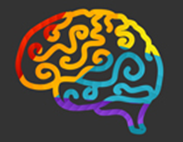Neurodiversity at Work
 The ACAS website indicates that ‘Neurodiversity’ is a relatively new term that refers to people who have dyslexia, autism, ADHD, dyspraxia and other neurological conditions. These are ‘spectrum’ conditions, with a wide range of characteristics, but which nevertheless share some common features in terms of how people learn and process information.
The ACAS website indicates that ‘Neurodiversity’ is a relatively new term that refers to people who have dyslexia, autism, ADHD, dyspraxia and other neurological conditions. These are ‘spectrum’ conditions, with a wide range of characteristics, but which nevertheless share some common features in terms of how people learn and process information.
Some of these conditions are referred to as ‘Specific Learning Difficulties’ or SpLD. ‘Neurodiversity’ is a broader reference to the diversity of the human brain and people’s ‘neurocognitive functioning’ and, unlike the SpLD title, reflects the fact that these conditions are not solely related to learning and also that they can confer strengths as well as weaknesses.
ACAS has produced research paper titled “Neurodiversity at Work” which can be seen at:
http://www.acas.org.uk/media/pdf/1/h/Neurodiversity_at_work_0916.pdf
Increasingly employers are realising that hiring neurodiverse employees can help improve productivity and assist in the company’s growth. Today, more firms are employing a diverse pool of talent including those with neurological limitations such as Autism, Asperger’s, ADHD, Dyspraxia and Dyslexia, among others. The growing interest by companies and employers for neurodiversity is driven by the need to look for a pool of highly talented individuals that can fill skilled positions.
Research by the University of Montreal indicates that people with autism are 40% better at problem-solving compared to those who do not fall into the neurodiversity category. Available data suggests that neurodiverse employees could increase the productivity of a company by nearly as much as 50%.
Neurodiversity refers to the infinite variety of human neurocognitive styles. While societies have often celebrated biodiversity and cultural diversity, aspects of human neurodiversity such as autism, dyslexia, and ADHD have long been considered as medical disorders, with attention focused on how to overcome these differences. The new perspective of the ‘neurodiversity’, views these as natural differences in thinking style that can lead to strengths, as well as challenges, in the workplace.
Increasingly the term ‘neurodiversity’ is to describe the emergent subcategory of workplace diversity and inclusion that is focused on better including people with alternative thinking styles. It is increasingly being recognised that Neurodivergent employees can bring a variety of unique strengths to their work – from creativity and insight, to outstanding information processing, data-driven thinking, and an ability to focus on tasks over long periods.
Gradually more employers are recognising the potential of a neurodiverse talent pool. One reason is that attention has focused far too much on the challenges often associated with neurodivergence in the workplace, rather than on the strengths these individuals can bring to the company.
Celebrities are now openly discussing their neurodivergence – and often in positive terms. One example being Sir Richard Branson who has indicated that his having dyslexia was the reason for his success. He stated in his blog: “dyslexic people can be hugely creative in identifying solutions to problems, and to coming up with new ways to tackle challenges… Many of the world’s most successful entrepreneurs, artists, and tech professionals are dyslexic – yours truly included. From my own experience, I know that dyslexic people can achieve great things when they focus on their strengths and get the right support in school.”
